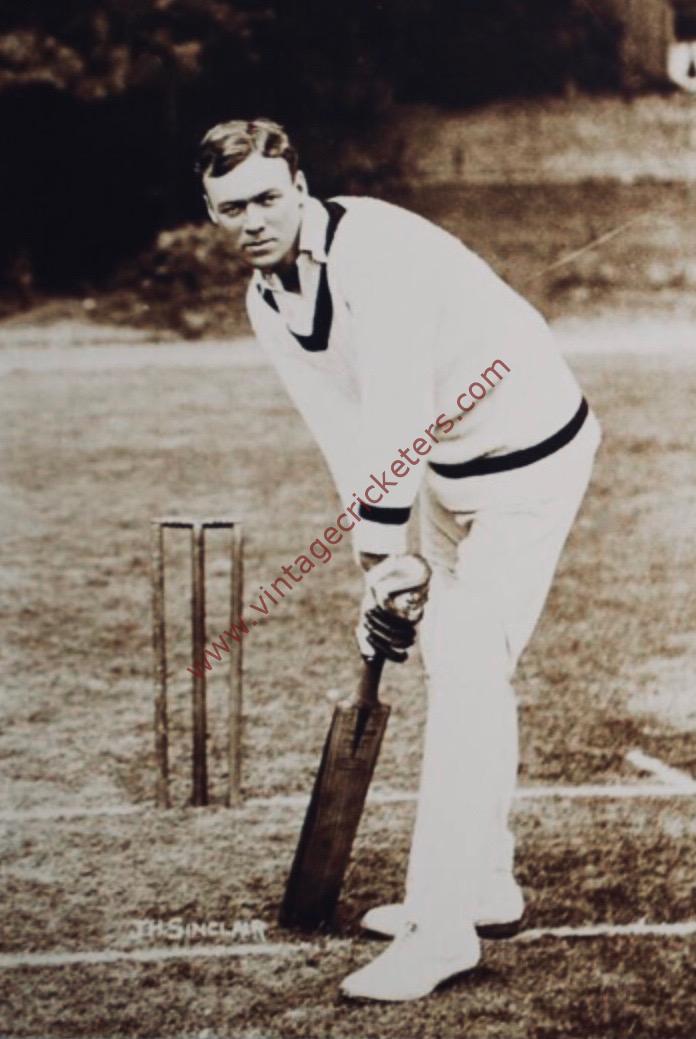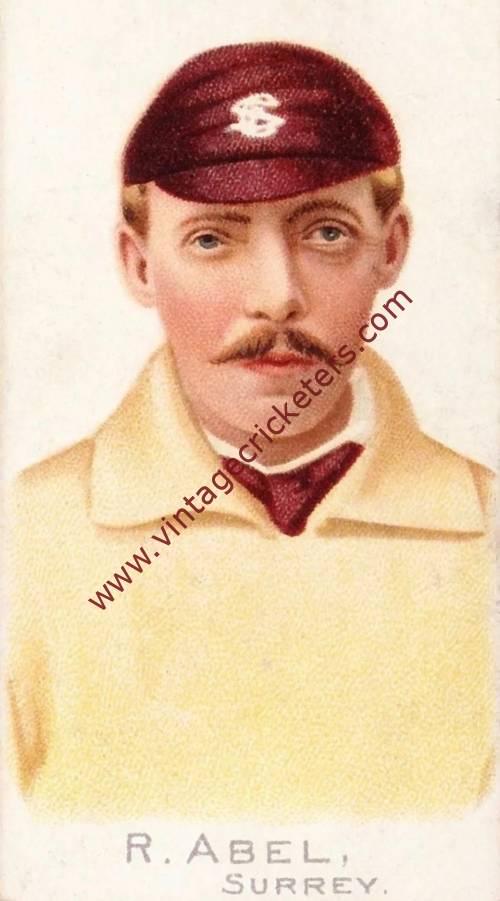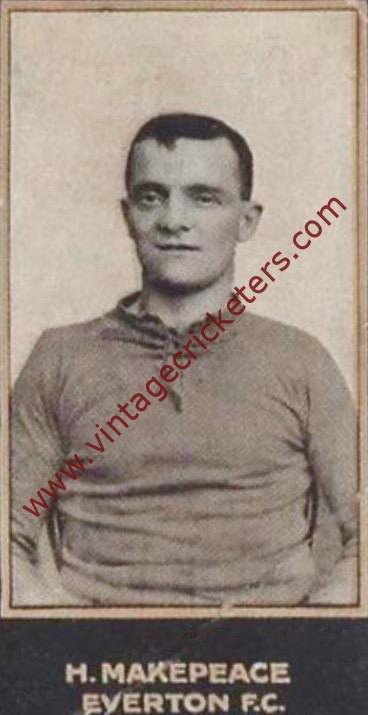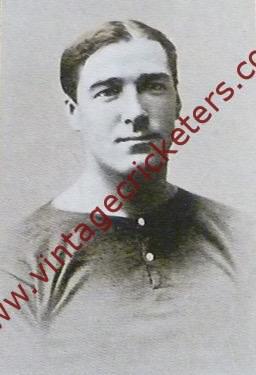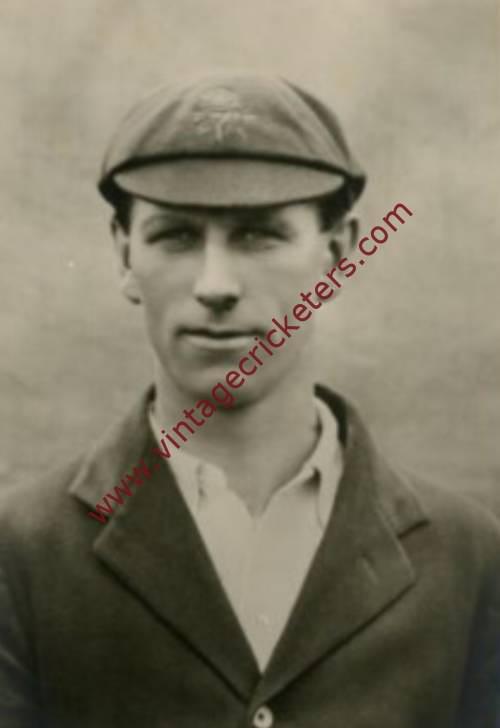Description
Swellendam, Cape Province born all rounder Jimmy Sinclair did more than anyone to put South African cricket on the map in the early days of their competing on the international stage. He scored South Africa’s first three Test centuries and was the first person from any country to score a century and take five wickets in an innings in the same Test. He is one of the fastest-scoring Test batsmen of all time.
Standing six feet four inches, exceptionally tall for the time, Sinclair was a “prodigious right-handed hitter and an excellent fast bowler, combining a nice variety of pace with a high delivery”. He made his first class debut for Transvaal in the 1892-93 Currie Cup a few weeks after turning 16, opening both bowling and batting, taking eight wickets and scoring 37 and 11. He took 10 wickets and top scored with 75 for a Johannesburg XV against Lord Hawke’s XI in 1895-96 and was selected for all three Tests that followed, making his Test match debut at Port Elizabeth in February 1896.
At this stage in its history South Africa had played three Tests, all against England, and had been so outclassed that no batsman had scored more than 29. That dismal record was not disturbed in the First Test in 1895-96, but in the Second Test Sinclair set a new record, scoring 40 in the first innings. He finished the series as South Africa’s second highest scorer with 103 runs at an average of 17.16 and, opening the bowling, South Africa’s second highest wicket taker with eight wickets at an average of 30.37. South Africa lost all three Tests by large margins.
In February 1897 Sinclair scored 301 not out in a club game, which remained the highest score in any form of cricket in South Africa for many years. South Africa’s next Tests came in 1898-99, with a two match series against Lord Hawke’s England. This time, thanks largely to Sinclair, the matches were more evenly contested, and South Africa gained a first innings lead each time before losing. He did not bowl in the First Test at Johannesburg in February 1899, but scored 86, South Africa’s first Test fifty, opening the first innings; apart from Pelham Warner’s 132 in England’s second innings, no one else in the match reached 40. In the Second Test at Cape Town Sinclair became the first person from any country to score a century and take five wickets in an innings in the same Test. In England’s first innings he took his Test best return of 6-26, dismissing them for 92, then went in to bat with South Africa’s score at 27 for 2 to make 106 before being last out with the total on 177. He was caught on the boundary in each innings.
Sinclair fought on the British side in the Boer War. He was captured by the Boers but escaped a POW camp in time to take part in South Africa’s tour of England in 1901 although no Tests were played on the tour. Sinclair’s batting was only moderately successful, but in the first class matches against the Counties he twice took 13 wickets in a match against Surrey and Gloucestershire, and as an indication of the esteem in which he was held in England he was invited to play a few matches for London County and to represent The Gentlemen against The Players. For London County he took a career best return of 8-32 against Derbyshire and scored 108 not out in 80 minutes against Warwickshire.
South Africa next played Test cricket when Australia brought a strong team for three Tests in 1902-03. The First Test at Johannesburg was drawn, Sinclair making 44 and 19 and taking five wickets. It was the first Test South Africa had not lost. In the Second Test, a week later on the same ground, South Africa lost, but Sinclair top-scored in each innings: 101 in two hours out of a team total of 240 in the first innings, and 18 in the second out of 85. Sinclair made a duck in the first innings of the Third Test at Cape Town, but in the second innings he made one of the fastest Test centuries of all time: 104, including six sixes, in 80 minutes, off approximately 79 balls. Wisden described it as “a superb innings, and he might perhaps have made more runs if he had not become somewhat reckless after completing his hundred”. He had gone to the wicket at 81-2, and the score was 216-6 when he was dismissed. South Africa lost again.
In South Africa’s next Test series, against the English tourists in 1905-06, Sinclair made 160 runs at an average of 20.00 and took 21 wickets at 19.90 in South Africa’s first series victory. By this stage other South Africans were also contributing substantially, such as the all-rounder Aubrey Faulkner and his fellow leg-spinners Reggie Schwarz, Bert Vogler and Gordon White, and as a bowler he was largely marginalised, although his batting continued to thrill, and the 4-1 series victory was a team effort. Sinclair continued to play Test cricket until the spring of 1911, but with only moderate success, making his final five Test appearances against Australia after 20 Test matches against England. His 3 centuries and 3 half centuries at Test level formed the basis of his batting average of 23.23, and his 63 Test wickets came at 31.68 apiece.
A 2006 source shows Sinclair as still being the world’s sixth quickest batsman. He scored his runs at around 71 or 72 per 100 balls. Various stories are told about him, including that on one occasion a ball he had hit for a six at the Old Wanderers Ground in Johannesburg landed on a train bound for the Cape and was only recovered at its destination. This ball was for many years on display at the Wanderers’ clubhouse (both old and new grounds) until a fire in the latter part of the 20th century. Having played his last first class cricket in 1911-12, Sinclair sadly died in 1913, aged only 36.
In 129 first class matches throughout his career, Sinclair scored 4,483 runs at an average of 21.55, with 6 centuries and 21 half centuries, recording a highest score of 136. With his bowling he took 491 wickets at 21.43 apiece, with 10 ten wicket matches and 33 five wicket innings. He also took 66 wickets in first class play.
Sinclair also played international rugby union and made a single international appearance in association football, thus representing his country at three sports and was also a skilled hockey player. He shares this distinction with his contemporary Percy Sherwell (cricket, association football and tennis).
Vintage Cricketers was founded in July 2019. There are more photographs of this cricketer in the Vintage Cricketers library, which are due to be loaded in due course. In the meantime, please send a message to us using the contact form at the bottom left of this page and we can arrange to prepare and publish all images of this cricketer if you have a particular interest in him.

